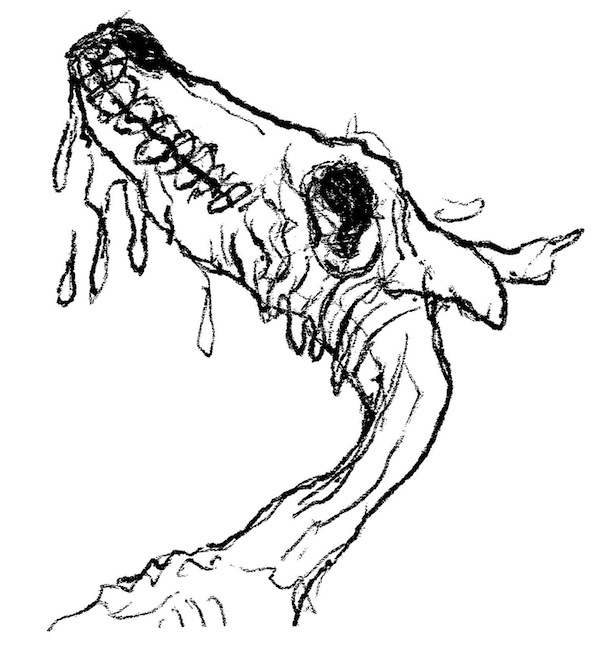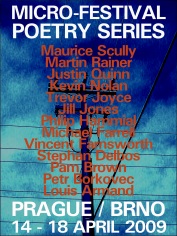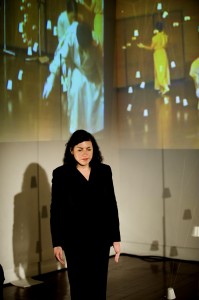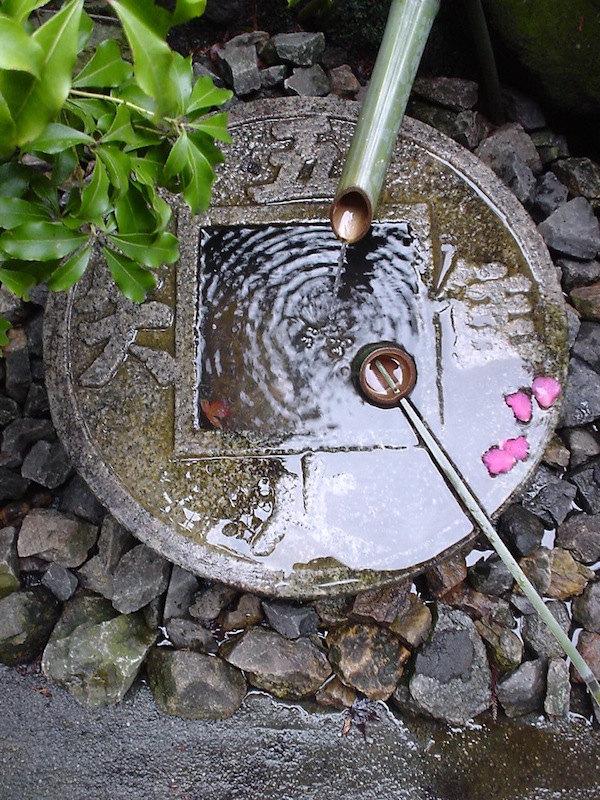ESSAYS
Zombie 2.0
 We know more about the undead species who have lived in our hearts and dined on our minds than ever before. We have probed into their weaknesses, evaded their tricks and know well of their canny (and uncanny) chicanery. We know these things … because they were once like us. Let us not rest on our laurels. Let us be vigilant and as ready as we can be for the uneasy future that is Zombie 2.0.
We know more about the undead species who have lived in our hearts and dined on our minds than ever before. We have probed into their weaknesses, evaded their tricks and know well of their canny (and uncanny) chicanery. We know these things … because they were once like us. Let us not rest on our laurels. Let us be vigilant and as ready as we can be for the uneasy future that is Zombie 2.0.
Post-Epic Editorial
We're thrilled and excited to say that we've now gone live with the second part of our Epic issue. Cordite 31.1: POST-EPIC aims, in the spirit of Ko Un's Maninbo (Ten Thousand Lives), to produce 1,000 lines of epic poetry. Towards this end, the poets featured in our Epic issue have each nominated a line from their work to be used as the title and starting point for a new Post-Epic poem.
Epic Editorial
When ‘Epic' was suggested as a theme for an issue of Cordite, I was expecting it to be either rejected outright or at least modified into something less archaic. When it was actually chosen as the theme for issue 31 with myself as the guest editor, I was faced with a more pressing concern: would we receive enough suitably epical submissions to justify our choice of this theme? Or would the dearth of appropriate contributions confirm that, as literary critic Tom Winnifrith has written, the epic is ‘as antique as a dinosaur', or, as Mikhail Bakhtin would have it, the epic poem is ‘an already completed genre … distanced, finished and closed'?
J.H. Prynne and the Late-Modern Epic
The poetry of J.H. Prynne has recently come to the attention of an international set of poets and literary theorists. This attention has coincided with the release of his updated collected work, Poems, and, coincidently, with Prynne's retirement from a teaching position at the University of Cambridge and as a librarian at Gonville and Caius College. The attention that the rerelease of Poems has incited is due partially to a growing awareness of contemporary British Poetry, and marks the first time that Prynne's poetry has been made widely available outside of the small press publications of Cambridge.
Π O’s 24 Hours: Ulysses in Fitzroy
 This is Π O’s bio note at the end of 24 Hours (1996), a 740-page, self-published epic poem set in Fitzroy, Melbourne. The P and O of his pseudonym are his actual initials and since the 1970s, Π O has been this poet’s stage-name as much as pen-name. In 1977, as Billy Marshall-Stoneking mentions in ‘Π O;An Appreciation’, Π O performed his poetry more than 250 times with Marshall-Stoneking and Eric Beach in and around Melbourne.
This is Π O’s bio note at the end of 24 Hours (1996), a 740-page, self-published epic poem set in Fitzroy, Melbourne. The P and O of his pseudonym are his actual initials and since the 1970s, Π O has been this poet’s stage-name as much as pen-name. In 1977, as Billy Marshall-Stoneking mentions in ‘Π O;An Appreciation’, Π O performed his poetry more than 250 times with Marshall-Stoneking and Eric Beach in and around Melbourne.
Stephan Delbos: The Prague Micro Festival Poetry Series
 In our latest feature, Stephan Delbos recalls some highlights from the inaugural Prague Micro Festival Poetry Series, held in Prague and Brno between 14-18 April 2009. To accompany the words and images, Cordite presents five live recordings of readings by Australian poets Jill Jones, Philip Hammial, Michael Farrell, Pam Brown and Louis Armand at the Globe Bookstore on 15 April 2009.
In our latest feature, Stephan Delbos recalls some highlights from the inaugural Prague Micro Festival Poetry Series, held in Prague and Brno between 14-18 April 2009. To accompany the words and images, Cordite presents five live recordings of readings by Australian poets Jill Jones, Philip Hammial, Michael Farrell, Pam Brown and Louis Armand at the Globe Bookstore on 15 April 2009.
A Nest of Cinnamon
 Combining poetry with music to create a spatial dialogue is common practice. From Sappho to Leonard Cohen, Anne Sexton to Alison Croggon, Eric Beach to Kieran Carroll, there are many poets, from our past and modern times, who have engaged in a mutually rewarding collaborative process with musicians for the stage.
Combining poetry with music to create a spatial dialogue is common practice. From Sappho to Leonard Cohen, Anne Sexton to Alison Croggon, Eric Beach to Kieran Carroll, there are many poets, from our past and modern times, who have engaged in a mutually rewarding collaborative process with musicians for the stage.
But Is it Poetry?
In this special feature, Emilie Zoey Baker presents the strange and wonderful aural texture that is sound poetry. Sound poetry highlights the phonetic aspects of human speech: it is poetry that has gone way beyond words, beyond the mathematics of …
Custom/Made Editorial
 The production line has not been idle at the Cordite Industrial Park on Bespoke Drive. Here are 44 poems that engage with the rubric of Custom/Made in a diverse range of text and articulations – poems that have often been 'made' by employing quirky and sprightly strategies in response to the subject.
The production line has not been idle at the Cordite Industrial Park on Bespoke Drive. Here are 44 poems that engage with the rubric of Custom/Made in a diverse range of text and articulations – poems that have often been 'made' by employing quirky and sprightly strategies in response to the subject.
Notes on Renga
 Renga is a collaborative form of poetry from Japan. In Japan it is now called “renku,” but the term “renga” has been internationally used for quite a long time, so let's go with “renga” here. Renga was born from the tradition of waka, the traditional/prestigious poetic form with 5-7-5-7-7 morae (sound units), in the 12th century. In the beginning it rigidly followed the high aesthetic of old waka in the Royal Court. However, later it began to incorporate secular elements and gave birth to a genre called haikai-no-renga (roughly meaning “mock-renga”) or haikai. Since the end of the 19th century it has been commonly called “renku.” Well, it has quite a tradition …
Renga is a collaborative form of poetry from Japan. In Japan it is now called “renku,” but the term “renga” has been internationally used for quite a long time, so let's go with “renga” here. Renga was born from the tradition of waka, the traditional/prestigious poetic form with 5-7-5-7-7 morae (sound units), in the 12th century. In the beginning it rigidly followed the high aesthetic of old waka in the Royal Court. However, later it began to incorporate secular elements and gave birth to a genre called haikai-no-renga (roughly meaning “mock-renga”) or haikai. Since the end of the 19th century it has been commonly called “renku.” Well, it has quite a tradition …
Keiji Minato: Notes on Modern Haiku (4)
Female haiku writers can hardly be categorized either in the language-centered group or in the existential image group, as described in my previous post. Even if they are different from each other and have elements common to male contemporaries, thinking about the genealogy of women haijin seems more informative than mingling them together with male writers.
Keiji Minato: Notes on Modern Haiku (3)
 Avant-garde haiku became bankrupt when its momentum was dissipated by the stabilization/conservative shift of the society around 1970, along with other radical movements in the literary and political arenas. Doubts about the form of haiku now came to be regarded as counterproductive. The basis for these doubts had been the desire to open up a common perspective that would embrace new possibilities for Japanese society as a whole, but the whole was now superimposed on individuals as something that had already been achieved, even if in a doubtful way.
Avant-garde haiku became bankrupt when its momentum was dissipated by the stabilization/conservative shift of the society around 1970, along with other radical movements in the literary and political arenas. Doubts about the form of haiku now came to be regarded as counterproductive. The basis for these doubts had been the desire to open up a common perspective that would embrace new possibilities for Japanese society as a whole, but the whole was now superimposed on individuals as something that had already been achieved, even if in a doubtful way.
Avant-garde haiku was bankrupt when its momentum was dissipated by the stabilization/conservative shift of the society around 1970, along with other radical movements in the literary and political arenas. Doubts on the form of haiku were now counterproductive. The ground for them had been the desire to open up a common perspective that would embrace new possibilities of the society as a whole, but a whole was now superimposed on individuals as something which was already achieved, even if in a doubtful way.
Keiji Minato: Notes on Modern Haiku (2)
The history of Japanese modern haiku was definitely male-centered until quite recently. There have been many superb female haijin; most of them remained in the “kessha (結社)” system (a “kessha” is a group or sect that is led by a master and usually has a hierarchical structure – followers adhere to basic rules their masters set up). The system and rules served positively for some, whose talents were rather nurtured than hindered by the fixed criteria. Others achieved their own voices outside the system, and their haiku reflect various interests outside or sometimes against male sensibilities.
Keiji Minato: Notes on Modern Haiku (1)
Haiku is a literary form. It carries ideological elements from its history as other literary forms do. Some of these elements are deeply ingrained in the genre. For example, seasonal themes and objective descriptions are the two main principles many people in Japan and in other countries believe to be imperatives. While they surely have some relevance (as they help beginners find concrete images and avoid various pitfalls), they are not absolutely necessary conditions for haiku.
Welcome to Haikunaut
I came to the haiku world 26 years ago with just one desire: to translate the poetry of Issa – some 20,000 verses, only a tiny fraction of which had appeared in English at the time. I plunged into Japanese …
Dry Pastoral
Contemporary pastoral? Such a term seems oxymoronic when describing a genre at least as old as Theocritus’s Idylls from the third century BCE. The pastoral itself is inherently backwards-looking, literally evoking the greener pastures of a pre-industrialised past. Even the …
Hal Porter’s Pastoral Vision
Few landscape poets have drawn an Arcadia of the austral zones with as much consolidated detail and convincing substance as Hal Porter does in his garden vision The Hexagon (1956). In matters of green comfort he provides from memory's storehouse – the granite-bowled, lush South Gippsland of his youth – Botticelli weeds, flesh-deep mosses, Ruben's cornucopiae, soft privet, canna lilies, extensive pasture, wormwood, boxthorn and blackberry. His poems mount a botanical catalogue recalling equally Spencer's Faerie Queen and the excellent Bush Invaders of South-East Australia, a biological control handbook from the Department of Primary Industries.
Pastoral Editorial
When we began throwing around ideas for this issue, the notion of 'Pastoral' first came up as a joke. Because ever since god knows when, for reasons that always seem to depend on one's thoughts regarding the generation of '68, …
Mulloway (Envoi)
Welcome to the dreamy village of Mulloway, population 28.1, set in the backblocks of the Hawkesbury, somewhere in the vicinity of Sandy Bay, Peat Island and the Angler's Rest. The place is awash with ribbon-fish shaped streamers and the sound of a parade of Customlines passing down the main street toward the water, all to a sound track of late-period Bob Dylan and Emmylou Harris …
Seven Secret Cities
A city had never the dimensions of a page; or, if it did, there was no need for the writing of it. Writing is a way in which a city of instances becomes an event. Instances disclose themselves patiently; the intention to account for these translates them into events. The inhabitant, who may or who may not be transitory, writes, and the page opens onto a secret space where instances arrange themselves into constellations: something here can at last and literally take place
Hidden Signs of a City
How does one read a city? More specifically, how does a poet decode, and in turn re/present, the language of a man-made space? In Australia (and other 'New World' constructs) much poetry has been devoted to the natural world; but …
Constant Haze (Notes From Chengdu)
Five weeks and I have still not visited Mao's statue, which stands at the heart of Chengdu's First Ring Road. On the map in one of the city's English language magazines his presence has been reduced to a vector-based outline, …
Experience
Okay this was how I was going to start this editorial: As themes go, this issue's is, if nothing else, topical. Hillary Clinton's whole campaign in the run up to the presidential nomination will live or die on the basis …
White Homes Editorial
It gives me great pleasure to introduce Issue 26.1 of Cordite Poetry Review, the all prose poetry edition. When I started thinking about which writers to include in this issue of Cordite, I wanted to show the range of styles and approaches within the prose poetry genre.









